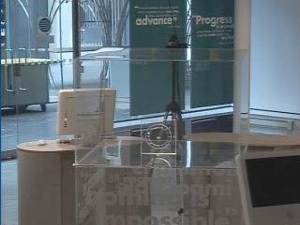… and the blogosphere reacts
Steorn, the Irish engineering firm claiming free-energy technology, has encountered a problem on the way to validating its claims. An independent Jury of scientists invited by Steorn to pass judgement on the technology named “Orbo” has ceased their work and released a public statement that no further information from them will be issued.
For the past two years the Jury examined test data offered by Steorn of its purported carbon-neutral technology that generates more energy than it consumes. If verified, Steorn’s intellectual property would change the global balance in energy technology. Through the jury’s chairman, professor emeritus of electrical engineering at the University of Alberta, R.I. MacDonald, the jury’s public release included the following statement: “The unanimous verdict of the Jury is that Steorn’s attempts to demonstrate the claim have not shown the production of energy. The jury is therefore ceasing work.” MacDonald subsequently stated on the Jury’s Web site that “The announcement says what the jury has to say. There will be no further information from the jury about the Steorn technology for contractual reasons.”
In a press release from Steorn, CEO Sean McCarthy said that he was “grateful to the Jury members for the time and effort that they had devoted to the process” and continued that he “fully understood the frustration of the Jury members with respect to the time that the process was taking.” The Irish Times reports Mr. McCarthy’s reaction. “The situation was we had engaged them in February 2007 and went through a process with them”. Two years have passed however and the jury clearly decided that enough was enough.
The reaction from the blogosphere was immediate and, not undeservedly, sarcastic.
Gizmodo commented that “In other words, Steorn has discovered an unlimited source of energy, and they’re using it to power their PR department, forever.”
Other pundits have interpreted the jury’s cessation of activities as evidence of Orbo’s failure. Fine Structure states, “It looks like they got all of 22 scientists to evaluate their device, and they have (thankfully) returned the verdict that the device is not producing energy.”
BoingBoing concluded that the jury “reports that Steorn’s Orbo does not produce free energy”. And Gadget Republic offered, “…Irish company Steorn claimed… that its Orbo machine could generate energy from nothing but a verdict from the international science community, delivered this week, refutes this claim.”
Yet these comments are contrary to statements by independent professional engineers who, under contract to Steorn, have tested, measured and validated configurations that produce a net gain in energy. A video of the engineers expressing those findings was introduced by Steorn earlier this year and was reported in OhmyNews.
Other bloggers, such as Free Energy Truth note that when the jury states they are ceasing work “This does not sound like the jury [has] seen the review process through to it’s conclusion – far from it. It smacks of frustration and impatience and ultimately results in the appearance of walking away leaving the job half done.”
Dr. Ben Goldacre of Bad Science bemoaned the Jury’s lack of clarity, saying “It would be nice if the jury could let us know what evidence they have been given.”
Clarity is lacking on whether the jury found the evidence sufficient and Steorn’s claims invalid, or whether they found the evidence insufficient to properly assess Steorn’s claims about the technology. Yet Steorn pushes on to educate the public about its findings, as conveyed by blogger Dann McCreary who has been publishing updates as a member of Steorn’s new private test group of engineers. According to Dann, Steorn will publish three instructional multimedia e-learning modules every week for the next ten weeks and Steorn wants the engineers to evaluate and test the modules.
CEO McCarthy concluded his press release on the upbeat note that the company had resolved the key technical problems related to the implementation of Orbo and “is now focused on commercial launch towards the end of this year, at which time academic and engineering validation would be released concurrent with public demonstrations”.
Stay tuned. This may not be over.
© 2009 Gregory Daigle
Originally published June 26, 2009
